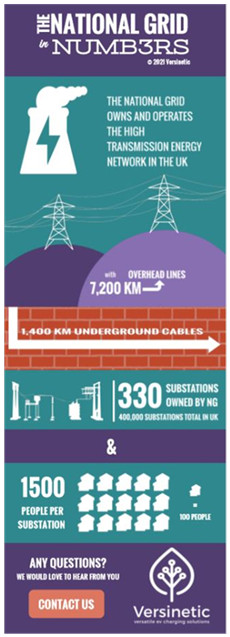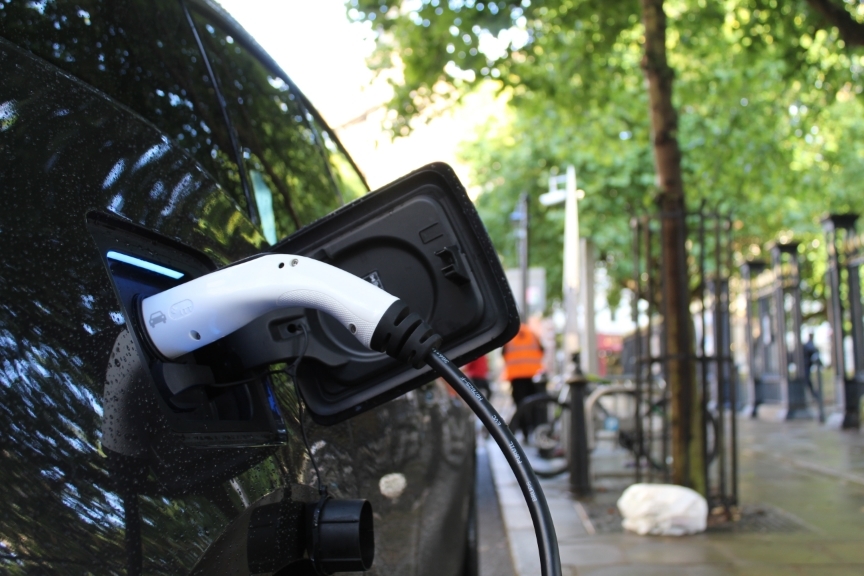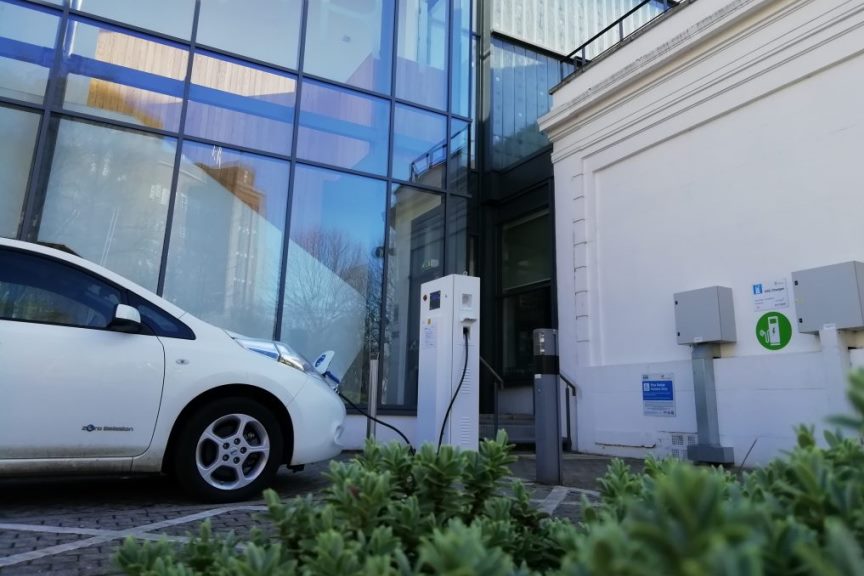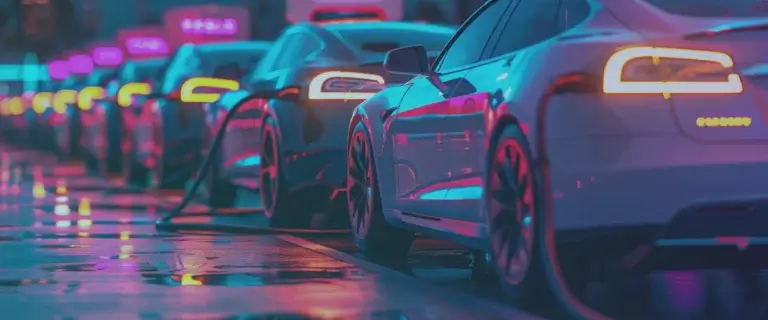The EV boom vs. the Grid
The combination of over half a million electric vehicles on our roads and a growing emphasis on clean energy, has created a perfect storm for the UK’s electricity grid to prepare for our wholesale switch to EVs.
After all, the growth of adoption is plain to see; there were approximately 245,000 electric vehicles on UK roads at the end of April 2021 – and with the inclusion of plug-in hybrid cars, the figure rises to more than 515,000.
These figures show no signs of abating, particularly if we consider that the increased demand for EVs occurred during the limiting COVID pandemic and is likely to rise further once restrictions are fully lifted.
Furthermore, Chancellor Rishi Sunak’s green transport funding of £1.3 billion is slated to back the rollout of public electric vehicle charge points.
This, coupled with Prime Minister Boris Johnson’s announcement of the ending of new petrol and diesel car sales by 2030, further hastens the changeover to electric cars.
While the accelerated uptake of electric vehicles is promising for the environment, changes to the national grid infrastructure could present real challenges for the UK’s electricity network.
Dunstan Power, Director of Versinetic, discusses the challenges rising uptake of EVs present for the UK national grid – and how they can be overcome.
Coming up in this article:
1. Why Energy Capacity Isn’t the Problem
2. The Challenges of System Stability
3. How the Mindset of Drivers is Going to Change
4. The Challenge of Domestic Infrastructure
5. Smart Charging Solutions
6. V2G – Vehicle-to-Grid
7. An Adaptable and Intelligent Charging Solution
Energy capacity isn’t the problem
According to the National Grid, enough capacity exists in the UK’s energy network to cope with the uptick in demand for electric vehicles. Even if every household were to convert to an electric vehicle overnight, currently there would only be a 10% increase in power required.
In fact, as a society, we are more conscious about energy usage and the deployment of clean and renewable energy sources means that we are using less energy as a nation than we did two decades ago, despite growth in the economy.
As long as the National Grid can maintain its energy production at a rate equivalent to the corresponding increase in demand, Distribution Network Operators (DNOs) seem confident they will be able to support electric vehicles.
The challenges of system stability
So, if it is not the National Grid’s ability to cope with increased energy demands in the viable range of load fluctuation, what is the issue?
The challenge does not lie with the National Grid’s energy generation capacity; rather, with the issues of maintaining system stability when it comes to energy distribution at a street level.
The National Grid system is made up of approximately 7,200 kilometers (4,470 miles) of overhead line, 1,400 kilometers (870 miles) of underground cable and it owns around 330 substations[1].
In total, there are around 400,000 substations in the UK, including large, intermediate, and final distribution substations.
A typical residential substation serves approximately 1,500 customers.
Electricity from the grid is “stepped down” at substations for distribution to homes and businesses at acceptable voltage levels.
Substations have power output limits, so if everyone installs a typical 7 kW EV charger, there could be too much demand for high levels of electricity at already peak times, and this could cause electricity overload.

How the mindset of the drivers is going to change
As the adoption of EVs grows, electricity demand will peak between 6 pm and 8 pm as most workers return home and charge their cars (notwithstanding a rise in flexible or working from home patterns engendered by a post-COVID shift in working culture).
We are creatures of habit and it is a traditional car mindset to fill up a petrol/diesel car when we run out of fuel, or on a regular basis.
With electric vehicles, this mindset can take time to shift. Typically, an electric car’s charge depends on the model and the size of its battery. EVs can range between 140 miles to 300 miles before they need recharging.
However, there is still range anxiety about running out of charge mid-route and whether there will be an available (working!) charging station nearby. Most people, however, do not drive close to these maximum distances on a regular basis so there is often no need to charge an EV every day.
An increase in easy-to-use charging points at service stations, supermarkets, and workplaces would further reduce concerns about the range capabilities of EVs.
Additionally, habits may need to change. For instance, peak time charging may be restricted by higher rates to ease pressure on the distribution network.
How controlled charging would work or look like – whether it is software-based or is a regulatory process imposed at the local or national level – is still the subject of contentious debate.
The challenge of domestic infrastructure
The challenges facing the grid to meet the needs of electric vehicle owners aren’t just about physically supplying energy to houses or balancing energy usage at peak times, but also about domestic infrastructure.
Domestic wiring in homes is inconsistent; with configurations ranging between TT, TNS, and TNCS British wiring regulations, the latter two requiring their own considerations when installing an EV charging point on driveways (which most EV owners will want), and whether they can handle the energy requirements of an electric vehicle charging at the same time as other household appliances simultaneously in use.
Aside from educating electric car drivers about the longevity of the EV battery and how often EVs need charging, we need to resolve the issues of smart energy usage when charging and discrepancies in domestic infrastructure.
Smart charging solutions
Intelligent charging solutions or “smart chargers”, which deploy a flexible approach and smart technology are the key to balancing future demand.
The recommendation of the government’s EV Energy Taskforce, states that all future car chargers should be ‘smart by design’.
What does this mean? Effectively, at its most basic, a smart charger is a remote-control charger. As well as controlling authorisation, maintenance reports, and billing, this remote control by a cloud-based back-office allows a third party to control when the charger is used, what load it’s allowed to use – and also permits the customer to minimise their electricity bill by charging the car when tariffs are low.
In other words, regardless of the time, you plug your car in, it should charge when you need it but will pause during expensive, high-demand evening periods when the demand on the grid is at its peak.
By using smart charging, EV drivers can save money while easing pressure on the grid. There are various smart charging technology options to facilitate this.

Firstly, there’s load balancing of cars. Even in a local context, say you have 2 EVs in your household, a smart charger could load balance between them.
Smart charging sets and controls charging management across charging stations for efficiency, without overload or an increase in power supply costs.
It ensures an electric vehicle household or business fleet is ready for each day’s use – just as if conventional petrol- and diesel-powered vehicles were used.
As well as allowing for the charging of multiple EVs within a household, load balancing facilitates workplace EV charging and powers electric vehicle fleets – with pilot schemes demonstrating that load balancing results in reduced costs for cabling and substation upgrades.
Another critical benefit is that, by optimising charging by assessing available capacity, consequently adjusting charging rates and times, load balancing lessens the need to upgrade power infrastructure.
Next – a user can minimise their electricity bill by charging their car when tariffs are low and not charging when they’re high. Thus, a third-party operator – e.g., DNO – could constrain a network of chargers’ charging rates, in order to prevent grid overload.
Now, let’s explore Vehicle-to-Building/Vehicle-to-Grid (V2B/V2G).
V2G – Vehicle-to-Grid
In a V2B/V2G setup, electric vehicle batteries can be used as a short-term energy source for the building’s energy load, which can lead to the reduction of energy costs during peak periods.
With V2B, drivers can use the EV battery to store energy at no extra cost, which can then be used to power homes or offices at night during peak energy rate hours.
Additionally, with V2G, excess electricity is sold back to the grid, as you would with a net-metered solar panel system, with the additional macro advantage of a grid load balancing effect.
V2G is being piloted in the UK by Octopus Energy, for instance, with their Powerloop project. Vehicle-to-Grid can also be used as an emergency backup to run a house in case of grid failure.
The problem is that most cars, charge points, and building infrastructure do not support this operation currently.
Adaptable, intelligent charging solution
When looking for viable smart charging solutions to the challenges mass EV adoption will bring, we need to consider solutions that take into consideration load limits of power substations and building infrastructure.
Smart charging technologies need to be easy to use if they are to be widely adopted. With that in mind, we co-developed ViGiL (VehIcle-to-Grid Intelligent controL), the UK’s first end-to-end, fully integrated Vehicle-to-Grid system.

This system was a proof of concept and is an off-vehicle communication and control platform that is designed for different types of V2G/V2B charging points. It manages energy dispatch between EVs and buildings, while also ensuring that the voltage/thermal distribution limits aren’t exceeded.
As consumers become more comfortable with EVs, we will see the situation of multi-EV households – just as we do with fuel-run vehicles; or, in the case of businesses, multi-fleet EVs.
Therefore, smart charging technologies need to grow in tandem with the end-users needs – if only to avoid constantly replacing smart chargers, which is neither cost-effective nor environmentally friendly.
Working with smart charger manufacturers, we have found that no one size fits all, hence the need for modular components or smart chargers that can be adapted to a business’ needs.
For example, our local controller module LINKRAY, sits passively between the charge station management system and charge points, allowing voltage levels to be monitored and the control of onsite charging stations.[MR4]
If the country-wide adoption of electric vehicles is to become a reality in the coming decade, the concerns and habits of EV drivers must be taken into consideration.
Most importantly, accessible, intelligent, and easy-to-use smart charging technologies compatible with all EVs -bridging both the shortcomings of the grid and domestic infrastructure – are paramount.
How can Versinetic help you today?
From start-ups to blue chips, Versinetic’s embedded systems software developers are enabling companies to stay a step ahead by providing them with bespoke solutions. Maintain your competitive edge – contact us today and let your business be among them!



